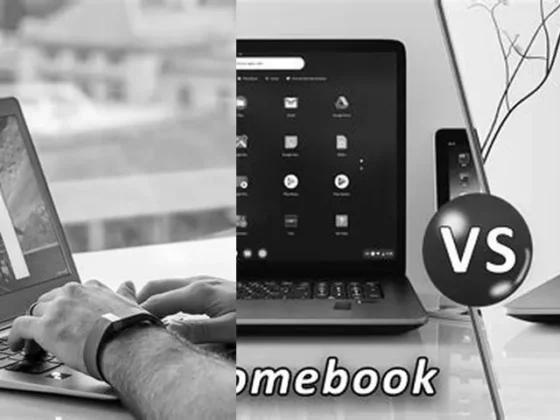How Do I Access My Files? A Comprehensive Guide to Navigating File Explorer, My Files App, and More!: Are you tired of searching for your files in the abyss of your computer or phone? Well, you’re not alone! Many of us struggle with finding and accessing our files efficiently. But fear not, because in this blog post, we will unravel the mysteries of file access and show you how to navigate through the digital labyrinth. Whether you’re a techno-savvy individual or someone who can’t tell a folder from a frittata, we’ve got you covered. So, grab your digital compass, put on your explorer hat, and join us on this adventure to discover how you can access your files with ease. Welcome to the ultimate guide on “How Do I Access My Files?”
Understanding File Explorer on Your Computer
For those wondering, “How do I access my files on a computer?” the answer lies within the built-in File Explorer. This utility is the gateway to your digital documents, images, videos, and more. To get started, simply open File Explorer from the taskbar or right-click on the Start menu and select File Explorer.
Navigating File Explorer
Once File Explorer is open, you will see a left pane that serves as your navigation compass. Here, you can select different locations such as Desktop, Downloads, or Documents to browse your files. This PC is a useful shortcut that shows all storage devices and drives connected to your computer, while Quick Access provides a snapshot of frequently used folders and recent files.
Searching for Files
If you’re looking for a specific file, the search bar at the top-right corner of File Explorer is a powerful tool. You can type in the name of the document or a keyword, and File Explorer will scour the selected location for matches.
Customizing the View
File Explorer also allows you to change how your files are displayed. You can choose between Details, List, Small icons, Medium icons, Large icons, and Extra-large icons views by clicking on the ‘View’ tab. This customization helps in locating files quickly according to user preference.
Accessing Files on Your Phone
When it comes to smartphones, accessing files is slightly different but equally straightforward. Most phones come with a default Files app which acts as a central repository for your photos, videos, documents, and downloads.
Finding the Files App
If you’re unsure where to locate the Files app on your phone, it typically appears on the home screen or within the app drawer. In case it’s not readily visible, your device manufacturer may have included a different app for managing files, which can usually be found by searching for ‘Files’ or ‘File Manager’ in the app drawer.
Using Files by Google on Android
On Android devices, the Files by Google app is a popular choice for file management. To access it, open the app and tap on Browse. This section categorizes your files, making it simpler to navigate through different types such as Downloads, Received files, Images, Videos, Audio, and Documents.
Viewing Options in Files by Google
In the Files by Google app, you have the flexibility to switch between Grid view and List view, which can be selected by tapping on the respective icons. This feature enhances the user experience by allowing you to choose the most convenient way to view your files.
Sorting Files on Your Device
Organizing your files is made easy with the sort feature. By tapping on Sort by in the More menu, you can arrange your files by Name, Date, Size, or Type, helping you find the exact file you need without hassle.
Accessing the My Files App on Android Devices
Some Android devices come with a pre-installed app called My Files or File Manager. To access this, open the app drawer – usually by swiping up from the bottom of the screen or tapping the app drawer icon. In the app drawer, tap on My Files or File Manager to open it.
Exploring the My Files App
The My Files app in Android devices typically provides a user-friendly interface that lists different categories such as Recent files, Images, Videos, Audio, Documents, Downloads, and Installation files (APKs). Tapping on each category will reveal the files stored within.
Opening File Explorer on Desktop
Back to the desktop environment, if you prefer using the mouse over keyboard shortcuts, you can easily open File Explorer by clicking the icon on the taskbar. Alternatively, double-clicking any folder on your desktop will also launch File Explorer, taking you directly to that folder’s contents.
Viewing and Opening Files in Google Drive
For those utilizing cloud storage, Google Drive is a common solution. To view and open files stored in Google Drive, navigate to drive.google.com using your web browser. Here, you can access all files and folders that you’ve uploaded or that have been shared with you.
Organizing Files in Google Drive
Google Drive offers similar sorting and viewing options to File Explorer and Files by Google. You can change the view between list and grid, and sort files by name, last modified, last opened by you, or by storage quota used. This ensures a seamless transition between managing files locally and in the cloud.
Best Practices for File Management
Regardless of the platform or device, good file management practices can save time and prevent frustration. Here are some tips:
- Create a logical folder structure to categorize your files.
- Regularly backup important files to an external drive or cloud service.
- Unclutter your space by deleting or archiving old, unnecessary files.
- Use descriptive file names for easy searching and identification.
- Take advantage of file tags or colors if your system supports it for added organization.
By integrating these methods into your daily routine, accessing and managing files will become a more efficient and less daunting task.
Conclusion
Accessing and managing files is a fundamental aspect of using digital devices. Whether it’s through a computer’s File Explorer, a smartphone’s Files app, or cloud services like Google Drive, understanding how to navigate, organize, and retrieve your files is crucial. By following the steps and tips provided, you can ensure that your files are always at your fingertips, neatly organized, and easily accessible.
FAQ & Related Questions about How Do I Access My Files?
Q: How do I access my files on my computer?
A: To access your files on your computer, you can search for them using File Explorer. Open File Explorer from the taskbar or right-click on the Start menu, choose File Explorer, and then select a location from the left pane to search or browse.
Q: Where can I find my stored files on my phone?
A: On your phone, you can usually find your files in the Files app. If you can’t find the Files app, try using the search feature on your phone. By default, the Files app may appear in the folder named Samsung on Samsung phones.
Q: How do I open the My Files app on my Samsung phone?
A: To open the My Files app on your Samsung phone, swipe up on your home screen to see your apps. You can find almost all the files on your smartphone in the My Files app, which is usually located in the folder named Samsung.
Q: Where can I find the My Files app on Android?
A: To find the My Files app on Android, open the Android app drawer by swiping up from the bottom of the screen or tapping its icon on the home screen. Then, look for the My Files app or File Manager.
Q: How do I open File Explorer on my computer?
A: To open File Explorer on your computer, you can click the File Explorer icon on the taskbar or double-click any folder on your desktop.
Q: How do I open files using Google?
A: To open files using Google, go to drive.google.com and view and open your files from there.


